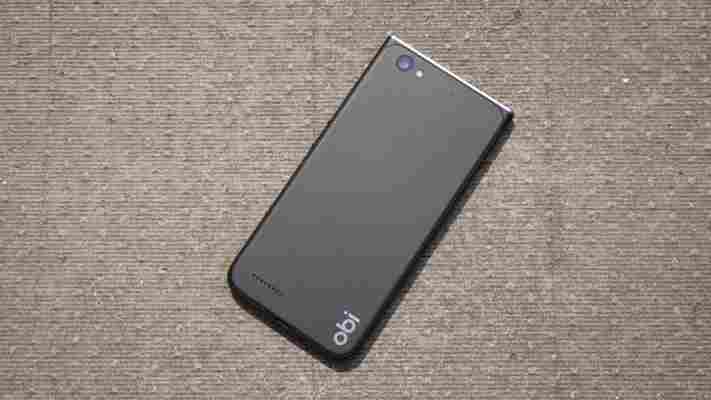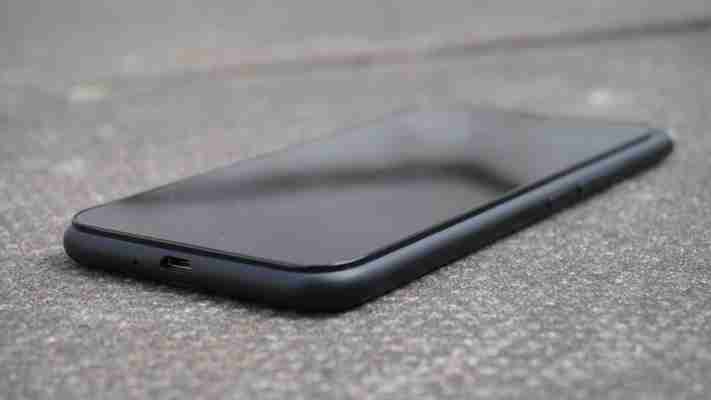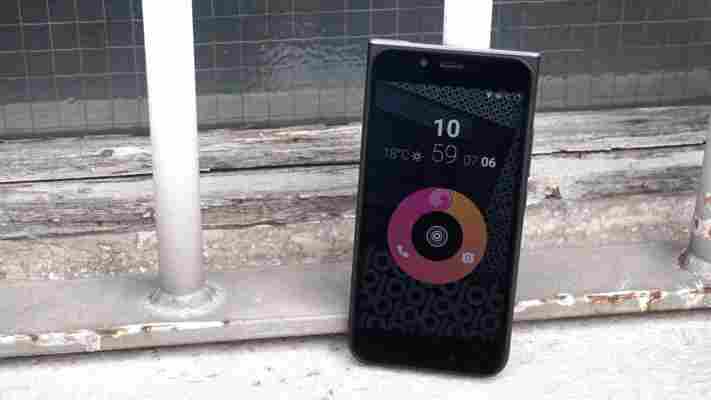You probably haven't heard of Obi before, but this new smartphone company certainly has a good pedigree. Founded by ex-Apple employees, Obi hopes to do for budget smartphones what OnePlus has done for flagship handsets, offering top notch build quality and excellent specs at a rock bottom price. However, Obi has a much more difficult road ahead of it compared to OnePlus. OnePlus had to create a top-end phone for less than the big brands' £600 beasts, so you could see some space for manoeuvre. Obi has to best one of the greatest budget smartphone ever made – the
However, Obi has a much more difficult road ahead of it compared to OnePlus. OnePlus had to create a top-end phone for less than the big brands' £600 beasts, so you could see some space for manoeuvre. Obi has to best one of the greatest budget smartphone ever made – the 3rd Gen Moto G - which costs just £130. Many have tried to beat Motorola over the last few years but none have succeeded to date.
In fact, Obi's latest smartphone, the Worldphone MV1, can't even keep up in terms of its basic specifications, as it only has an 8-megapixel camera (down from the Moto G's 13-megapixel sensor), and a quad-core 1.3GHz Qualcomm Snapdragon 212 processor, which pales in comparison to the Moto G's Snapdragon 410 chip.
And that's just the 3rd Gen Moto G, as the imminent arrival of the Moto G4 gives it an even more impressive specification to contend with, including an octa-core Snapdragon 617 chip and a large 5.5in Full HD display. The Obi MV1 does have the edge on price, though, coming in at £119 compared to the 3rd Gen Moto G's £130 and the Moto G4's £169.

Design
Still, it's a tough act to follow no matter which way you look at it, so it's just as well the MV1 goes big on design to help draw your attention. With its curved bottom but flat-edged top, the MV1 is by one of the most bizarre-looking smartphones I've ever seen, with the white model in particular standing in stark contrast to its black, elevated glass display.
It uses a polycarbonate frame, too, rather than cheap plastic, and you wouldn't think from picking it up that it costs just £119. The flat metal finish on the top is another great touch, and the whole phone just feels great to hold, particularly when those rounded corners fit so snuggly in your palm. Admittedly, it's a touch wide to reach comfortably over to the other side for me without stretching my thumb, and the soft-touch rear doesn't provide quite as much grip as I'd like. Still, it's exceedingly well-made for such a cheap phone, and its looks alone will tempt some away from Motorola.
Cyanogen OS
It's also one of the only budget phones to run Cyanogen rather than stock Android – the other being the £130 WileyFox Swift . Admittedly, Cyanogen 12.1.1 looks very similar to stock Android, and Obi's also promised that every MV1 will get a free OTA update to Cyanogen 13.1 when it becomes available, so you won't get left behind on all the latest features.
There are a few things that set Cyanogen apart from Android, though, as it has a slightly simpler alphabetised app tray and Truecaller is built straight into the native dialler, letting you identify unknown callers and block unwanted calls without having to download an additional third-party app.
You can also customise the look of the interface with the Themes store. You'll need to register for a Cyanogen account, but there are plenty of free and paid-for looks to choose from if you don't like Cyanogen's default appearance.
Performance
However, the MV1 comes a cropper over its general performance. While its quad-core 1.3GHz Qualcomm Snapdragon 212 chip and 2GB of RAM are perfectly suitable for basic day-to-day tasks, it just doesn’t feel quite as slick as the 3rd Gen Moto G. In Geekbench 3, for instance, the MV1 scored just 332 in the single core test and 1,110 in the multicore test, which is roughly the same as the £75 Vodafone Smart Prime 7 . The Moto G, on the other hand, was way out in front with its respective scores of 532 and 1,598, and was much quicker to load apps and games during testing.
The MV1 also falls behind when it comes to web browsing, as evidenced by its rather underwhelming Peacekeeper score of 382. This is almost twice as slow as the Moto G, and trying to navigate the Guardian's home page was an utter disaster. Not only was it slow to recognise my swipes, but it also stumbled over images and adverts even when browsing less-demanding sites. As a result, this isn't a phone I'd recommend for using the internet, as it's just a bit too frustrating when you're trying to look something up quickly.

The MV1 isn't really cut out for games, either, as it produced just 116 frames (1.9fps) in the offscreen Manhattan 3.0 test in GFX Bench. To be fair, the 3rd Gen Moto G didn't handle this demanding test any better, so in both cases you're best sticking to simple games like Threes! rather than attempt something more complex like Hearthstone.
Battery Life
The MV1 can't match the Moto G on battery life, either, as it lasted just 8h 51m in our continuous video playback test with the screen set to our standard brightness measurement of 170cd/m2, which is pretty below average even for a budget smartphone. The Moto G, by comparison, lasted a much more impressive 11h 12m under the same conditions. Continues on Page 2







Leave a Reply